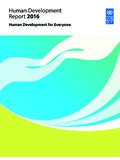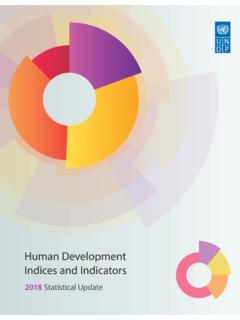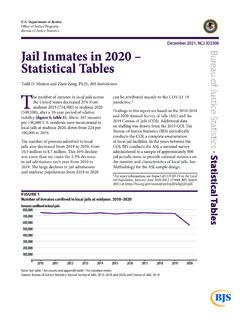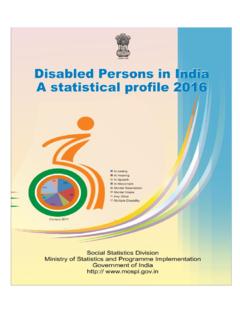Transcription of FEMALE GENITAL MUTILATION/CUTTING - UNICEF
1 FEMALE GENITAL MUTILATION/CUTTING : A GLOBAL CONCERNUNICEF S DATA WORK ON FGM/CSUPPORT FOR DATA COLLECTIONDATA ANALYSIS AND DISSEMINATION UNICEF supports the collection of nationally representative data on FGM/C through the Multiple Indicator Cluster Surveys (MICS). The MICS is a household survey programme that was developed by UNICEF to assist with monitoring the health and well-being of women and children. The surveys are designed and implemented by national counterparts mainly national statistical offices with continuous technical support from UNICEF . Over the last 20 years, close to 300 MICS have been carried out in more than 100 countries, generating one of the largest sources of statistically sound and internationally comparable data on women and children worldwide.
2 A module on FGM/C was first included in the 2000 MICS in the Central African Republic, Chad and Sudan. Since then, more than 30 MICS have collected information on FGM/C in 19 countries. The latest round of MICS (MICS5, conducted mainly from 2013 to 2016) will produce updated data on FGM/C for around eight countries. UNICEF maintains a global database on several FGM/C indicators that includes comparable data from nationally representative household surveys such as the Demographic and Health Surveys (DHS), MICS and other national sources. UNICEF s data analysis work on FGM/C seeks to highlight trends, emphasize patterns found within the data and strategically inform policy, advocacy and programmatic efforts to end the practice. The data compiled and analysed by UNICEF are disseminated in a variety of ways including through its annual flagship publication, The State of the World s Children, and in a number of data-driven publications and country profiles.
3 This brochure draws on data from more than 90 nationally representative surveys making it the most up-to-date compilation of statistics on FGM/C. All of UNICEF s resources on FGM/C statistics can be found at: < >CURRENT PROGRESS IS INSUFFICIENT TO KEEP UP WITH INCREASING POPULATION GROWTH. IF TRENDS CONTINUE, THE NUMBER OF GIRLS AND WOMEN UNDERGOING FGM/C WILL RISE SIGNIFICANTLY OVER THE NEXT 15 of girls aged 15 to 19 years who have undergone FGM/C Fast decline among girls aged 15 to 19 has occurred across countries with varying levels of FGM/C prevalenceTHERE HAS BEEN AN OVERALL DECLINE IN THE PREVALENCE OF FGM/C OVER THE LAST THREE DECADES. YET, NOT ALL COUNTRIES HAVE MADE PROGRESS AND THE PACE OF DECLINE HAS BEEN UNEVENTOGO1984: 10% 2013-2014: 2%BURKINA FASO1980: 89% 2010: 58%EGYPT1985: 97% 2015: 70%KENYA1984: 41% 2014: 11%LIBERIA1983: 72% 2013: 31%198551199548200544199049200046201041 Today37 Note: This is a weighted average based on comparable data.
4 FEMALE GENITAL MUTILATION/CUTTING (FGM/C) is a human rights issue that affects girls and women worldwide. As such, its elimination is a global concern. In 2012, the United Nations General Assembly adopted a milestone resolution calling on the international community to intensify efforts to end the practice. More recently, in September 2015, the global community agreed to a new set of development goals the Sustainable Development Goals (SDGs) which includes a target under Goal 5 to eliminate all harmful practices, such as child, early and forced marriage and FGM/C, by the year 2030. Both the resolution and the SDG framework signify the political will of the international community and national partners to work together to accelerate action towards a total, and final, end to the practice in all continents of the world. More and better data are needed to measure progress towards this common goal.
5 Data sources: UNICEF global databases, 2016, based on Demographic and Health Surveys (DHS), Multiple Indicator Cluster Surveys (MICS) and other nationally representative surveys, 2004 2015. For detailed source information by country, please see < >. Population data are from: United Nations, Department of Economic and Social Affairs, Population Division, World Population Prospects: The 2015 revision, CD-ROM edition, United Nations, New York, citation: United Nations Children s Fund, FEMALE GENITAL MUTILATION/CUTTING : A global concern, UNICEF , New York, 2016. UNICEFData and Analytics SectionDivision of Data, Research and Policy3 United Nations PlazaNew York, NY 10017, USAT elephone: +1 212 326 7000E-mail: : [1] United Nations Population Fund, Project Embera-wera: An experience of culture change to eradicate FEMALE GENITAL mutilation in Colombia Latin America , UNFPA, December 2011, < >.
6 [2] Ghadially, R., All for Izzat : The practice of FEMALE circumcision among Bohra Muslims , Manushi, no. 66, September October 1991, < org/pdfs_issues/PDF%20files%2066 >; Ghadially, R., Update on FEMALE GENITAL mutilation in India , Women s Global Network for Reproductive Rights Newsletter, January March 1992.[3] Dahlui, M., The Practice of FEMALE Circumcision in Malaysia , paper presented at Universiti Sains Malaysia (USM), Penang, 10 May 2012, < >; Rashid, A. K., S. S. Patil and A. S. Valimalar, The Practice of FEMALE GENITAL mutilation among the Rural Malays in North Malaysia , The Internet Journal of Third World Medicine, vol. 9, no. 1, 2010.[4] Al-Hinai, H., FEMALE GENITAL mutilation in the Sultanate of Oman , January 2014, < >.[5] Alsibiani, S. A. and A. A. Rouzi, Sexual Function in Women with FEMALE GENITAL mutilation , Fertility and Sterility, vol.
7 93, no. 3, 2010, pp. 722 24, < >.[6] Kvello, A. and L. Sayed, Omskjering av kvinner i de forente arabiske emirater er klitoridektomi i tradis-jonell praksis et overgrep mot kvinner? (Concerning FEMALE Circumcision in the United Arab Emirates: Is clitoridectomy in a traditional context an assault against women?), thesis paper, Faculty of Medicine, University of Oslo, Oslo, 2002; Al Marzouqi, W., Fatal Traditions: FEMALE circumcision in the , Desert Dawn, vol. 22, no. 1, January 2011, pp. 6 11, < >.[7] United Nations Children s Fund, FEMALE GENITAL Muti-lation/ cutting : A statistical overview and exploration of the dynamics of change, UNICEF , New York, 2013. UNICEF /UNI193031/Bindra UNICEF /UN05209/DragajA girl holds a leaflet of the National Coordination for the Abandonment of FGM/C during an awareness-raising campaign in of girls and women aged 15 to 49 years who have undergone FGM/C, 2004 2015 Percentage of girls and women aged 15 to 49 years who have heard about FGM/C and think the practice should end, 2004 2015 Percentage of girls aged 0 to 14 years who have undergone FGM/C, 2010 2015 Percentage of boys and men aged 15 to 49 years who have heard about FGM/C and think the practice should end, 2000 2015 Notes: The latest available data for each country are presented in the charts above.
8 An older source had to be used to report on the prevalence of FGM/C among girls and women aged 15 to 49 years for Somalia (MICS 2006) since the 2011 MICS was conducted separately in the two parts of the country: the Northeast Zone (also referred to as Puntland) and Somaliland. Prevalence data on FGM/C for girls and women aged 15 to 49 are not available for Indonesia. Data on girls for Egypt refer to ages 1 to 14 years and for Indonesia to ages 0 to 11 years. Older sources had to be used to report on the prevalence of FGM/C among girls aged 0 to 14 years for Gambia (MICS 2010), Sierra Leone (MICS 2010) and Yemen (National Social Protection Monitoring Survey 2012) since the latest source for each of these countries did not collect these data. Prevalence data on FGM/C among girls under age 15 are not available for the remaining nine countries.
9 Prevalence data on FGM/C for girls and women aged 15 to 49 years for Ethiopia are from a different source than data on FGM/C for girls aged 0 to 14 years. Prevalence data for girls aged 0 to 14 reflect their current, but not final, FGM/C status since some girls who have not been cut may still be at risk of experi-encing the practice once they reach the customary age for cutting . Notes: The latest available data for each country are presented in the charts above. The 2011 MICS data for Ghana could not be used to report on attitudes towards FGM/C due to the fact that information is missing for girls and women with no living daughters; data from the 2006 MICS are used instead. In Liberia, only cut girls and women were asked about their attitudes towards FGM/C; since girls and women from practising communities are more likely to support the practice, the level of opposition in this country as captured by the 2013 DHS is lower than would be expected had all girls and women been asked their opinion.
10 Data on attitudes towards FGM/C among girls and women are not available for Indonesia. Data on boys and men for Cameroon, Chad, Mali and Mauritania refer to ages 15 to 59 years. Data on boys and men for Benin, Chad, Mali, Mauritania, Sudan and the United Republic of Tanzania cannot be directly compared with data on girls and women since data sources for the latter are more recent for these countries. Data on attitudes towards FGM/C among boys and men are limited since these data have not been systematically collected in all surveys. THE PREVALENCE OF FGM/C VARIES GREATLY ACROSS COUNTRIESMORE THAN HALF LIVE IN JUST THREE COUNTRIES: INDONESIA, EGYPT AND ETHIOPIA44 MILLION ARE GIRLS BELOW AGE 15AS THE AVAILABILITY OF REPRESENTATIVE DATA ON THE EXTENT OF FGM/C INCREASES, SO DOES THE NUMBER OF GIRLS AND WOMEN KNOWN TO HAVE UNDERGONE THE PRACTICETHE MAJORITY OF PEOPLE IN COUNTRIES WITH DATA THINK THE PRACTICE SHOULD ENDWHILE THE EXACT NUMBER OF GIRLS AND WOMEN WORLDWIDE WHO HAVE UNDERGONE FGM/C REMAINS UNKNOWN, AT LEAST 200 MILLION GIRLS AND WOMEN IN30 COUNTRIES HAVE BEEN SUBJECTED TO THE PRACTICEOF THESE 200 MILLION Available data from large-scale representative surveys show that the practice of FGM/C is highly concentrated in a swath of countries from the Atlantic coast to the Horn of Africa, in areas of the Middle East such as Iraq and Yemen and in some countries in Asia like Indonesia.
















